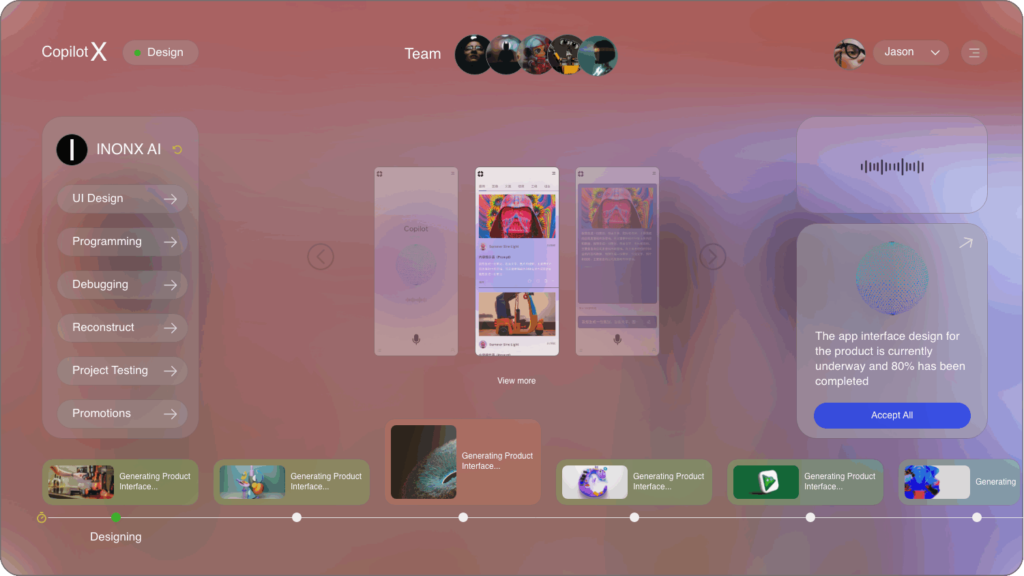Artificial Intelligence continues its unprecedented evolution in 2024, marked by powerful new large models, advanced tools and APIs, and tailored AI technologies designed to meet specialized industry needs. Notable players, including tech giants like Google and emerging startups, are pushing the boundaries of what AI can achieve across various sectors, from healthcare to retail. This article delves into these advancements, highlighting their functionalities, applications, and wider impact on industries.
Google recently unveiled their latest large language model, **Google Gemini 1.5 Pro**. This iteration is a significant upgrade over its predecessor, boasting multimodal capabilities that allow it to process and generate textual, visual, and auditory data concurrently. Users can input a mix of text and images, and the model will generate contextually relevant responses that integrate both modalities seamlessly. The extended context understanding of Gemini 1.5 Pro enhances its ability to grasp longer dialogues and complex queries, making it particularly effective in customer support and content creation applications. This model positions itself as a versatile tool for industries requiring intricate AI interactions, such as education and creative media. Sources confirm that this model can provide users with more nuanced suggestions, leading to better user experiences.
Another noteworthy entry in the AI landscape is the emergence of **AI Text Generation Tools**, such as Jasper and Writesonic, which are gaining traction among content creators and marketers due to their capabilities for personalized and contextually aware content generation. These tools now leverage neural architectures like Gemini 1.5 Pro, boasting features like style adaptation, tone modulation, and enhanced coherence over longer texts. The AI-driven writing assistance has transformed marketing strategies for businesses, allowing for tailored advertising campaigns that resonate with specific target audiences. A recent study from TechRadar reports that organizations that adopt these advanced tools have seen a 40% increase in engagement compared to those using traditional methods.
Moreover, the integration of AI into **business automation** tools has accelerated in 2024. Companies are now leveraging extended APIs that allow seamless interaction with other enterprise software. For example, enterprise resource planning (ERP) systems are implementing AI modules capable of predictive analytics; these modules help businesses streamline operations by forecasting demand, managing inventory levels, and optimizing supply chain processes. The advancements in these tools indicate a shift towards more intelligent negotiation with data, providing businesses not only with insights but also actionable recommendations. Industry experts affirm that such integrations are likely to reduce operational costs by up to 25% in the coming years.
In the realm of **cybersecurity**, innovative AI products are being launched to tackle the growing threat of advanced cyberattacks. One promising tool, developed by Darktrace, utilizes self-learning AI to detect and respond to potential security threats in real-time. The current iteration of this tool incorporates enhanced functionalities like behavior prediction and anomaly detection, offering businesses preemptive insights into security vulnerabilities. The global cybersecurity landscape is rapidly changing, and Knightscope’s recent deployment of **AI-Enhanced Retail Robots** illustrates how AI is being integrated into everyday scenarios. These robots are equipped with visual recognition capabilities that monitor crowds, detect suspicious activities, and alert human operators, thus serving as an additional layer of security in retail environments. As Cybersecurity Ventures warns about the projected damage costs of ransomware reaching $265 billion by 2031, such advancements are crucial for protecting sensitive information.
Emerging technologies that focus on **reliable and debiased large language models (LLMs)** have also gained prominence this year. Organizations like the Allen Institute for AI and AI Fairness have collaborated on developing models specifically trained to mitigate biases present in traditional LLMs. Such advancements are essential in ensuring that outputs from AI systems align with ethical standards and do not perpetuate harmful stereotypes or misinformation. These innovative LLMs not only engage in neutral conversations but can also provide information with a higher degree of dependability across varied disciplines. According to a research paper published by the Association for Computational Linguistics, these new models significantly outperform their biased counterparts, leading to increased trust in AI applications.
In **education**, AI technologies are reshaping traditional learning methodologies. With the launch of platforms like Khan Academy’s AI tutor, students receive personalized learning experiences tailored to their individual needs. This innovative platform incorporates aspects of multimodal learning, combining audio, visual, and interactive elements to ensure that students engage with the material effectively. The tool has been particularly beneficial in STEM fields, where complex concepts often require tailored instructional strategies. Educational Technologist notes that the adoption of such AI-enhanced platforms has led to a 30% improvement in overall student performance in mathematics over the last year.
Creative industries are also witnessing transformational changes through the introduction of collaborative generative AI tools. For instance, tools like OpenAI’s DALL-E 3 allow artists and designers to produce high-quality visual art from textual descriptions. Coupled with new functionalities that incorporate user feedback, these applications enable creators to explore various artistic styles and themes effortlessly. A recent case study from the Journal of Creative Technology discusses how the integration of AI-driven design tools is streamlining workflows for professionals, providing an efficient bridge between concept and creation, significantly shortening project timelines.
AI is not limited to established sectors; **open-source autonomous driving platforms** are making strides in the automotive industry. In 2024, companies such as Tesla and Waymo are collaborating with open-source communities to refine algorithms that govern autonomous navigation and decision-making. These platforms allow developers to contribute to, test, and innovate within safe environments, yielding more robust and reliable driving systems. A recent article from MIT Technology Review highlights that advancements in this technology could lead to safer roads, with predictions estimating a 50% reduction in traffic accidents facilitated by AI-driven algorithms by 2030.
The rapid expansion of AI technologies demonstrates their transformative potential across diverse industries. From advanced large models like Google Gemini 1.5 Pro enabling multimodal engagement to innovative AI products addressing crucial business challenges, the landscape is evolving at an unprecedented pace. The integration of AI in specialized use cases, continued developments in debiasing efforts, and tools crafted for particular sectors signal an AI frontier poised to redefine how businesses operate, how creatives produce, and how educators engage with their students. As we move further into 2024, it’s evident that the AI advancements of today will lay the groundwork for a more intelligent and more connected future.
In conclusion, as artificial intelligence technologies mature and encompass new functionalities, industries stand to benefit substantially. The innovations emerging in 2024 showcase not only advancements in AI efficiency but a genuine commitment to making AI inclusive, effective, and accessible across different sectors. The future holds exciting possibilities as these developments continue to unfold, fostering collaboration and creativity in ways we have only just begun to explore.
Sources:
1. TechRadar: “The Impact of AI Text Generation on Marketing Strategies”
2. Cybersecurity Ventures: “Global Cybersecurity Outlook 2024”
3. Association for Computational Linguistics: “Debiasing Large Language Models”
4. Educational Technologist: “The Role of AI in Student Performance Improvement”
5. MIT Technology Review: “The Future of Open-Source Autonomous Driving Platforms”

























